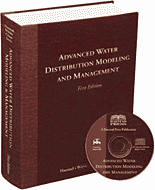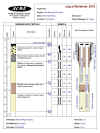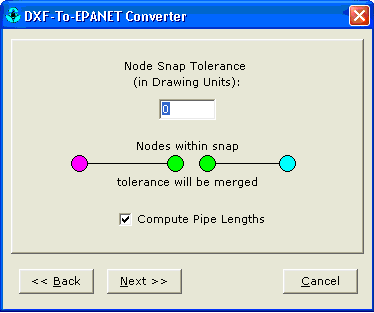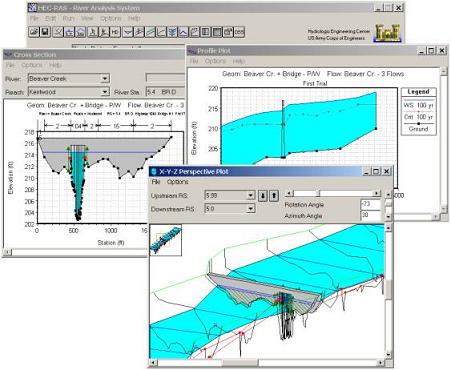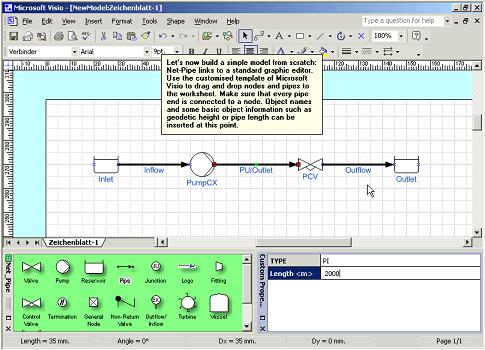The following information was received from Innovative Hydraulics:
What is Visual Hydraulics?
Visual Hydraulics is a state of the art, flexible hydraulic analysis tool. It is used primarily for modeling the hydraulic characteristics of water and wastewater treatment plants, and is capable of analyzing entire hydraulic profiles. The program follows the traditional method for analyzing water surface profiles: a downstream control point is selected, and the hydraulic profile is then determined upstream of that control point.
What can Visual Hydraulics model?
Visual Hydraulics covers most of the hydraulic features typically encountered in a treatment plant application. A user may analyze the following features: full flow pipes, open channels (rectangular, trapezoidal, triangular, circular), tanks, orifice/baffle/gate(s), weirs (v-notch, rectangular, sharp crested, Cipolletti, contracted, and broad crested), flumes (Parshall, rectangular, trapezoidal, cutthroat), racks/screening devices, tank launders, filter media, contraction/enlargements, and Venturi meters. Submerged weir and flume analysis is also included.
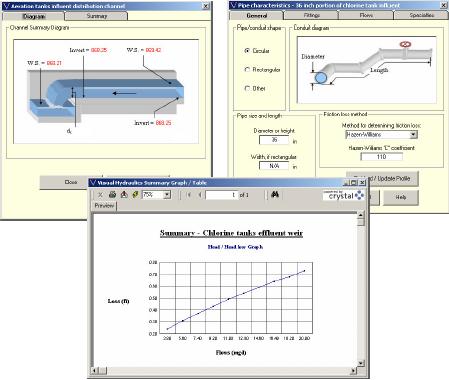
Visual Hydraulics Features:
- Full hydraulic analysis capabilities for almost any hydraulic feature.
- Multiple flow options, including any number of return flows.
- Take units off-line or put units on-line and see how it affects the hydraulic profile.
- Specialty tools, including unequal flow splitting, user defined loss equations, and manifolds/diffusers.
- Built-in alerts catch unwanted conditions, such as high velocities, weir submergence, and high losses.
- Advanced summary features including summary equations, diagrams, and reports.
- Analyze an entire hydraulic profile or just one hydraulic feature.
For more information see Innovative Hydraulics web page.
